Published on June 3, 2011 by Grace Melton click here to view this at Heritage.org
From the halls of the United Nations at Turtle Bay to its expansive buildings in Geneva, radical feminism is among the predominant views dictating social policy and programs. Feminists lead their international agenda from the new United Nations Entity for Gender Equality and the Empowerment of Women, known as “UN Women,” often in partnership with a host of nongovernmental organizations (NGOs) from the U.S. and Europe that espouse a radical social agenda. In turn, NGOs such as the International Planned Parenthood Federation, Advocates for Youth, and the Center for Health and Gender Equity swarm to U.N. meetings and use them as forums to perpetuate their agenda.
Alarmingly, this radical feminist agenda reduces the diverse economic, political, and social needs of women around the world to issues of sexuality and fertility. At the U.N., nearly every conversation, forum, and program that purports to be concerned with women has a monomaniacal focus on such matters as sexual rights, reproductive health, contraception, and abortion.
The United States, under the Obama Administration, has aided this radical feminist agenda, working in lockstep to promote and fund UN Women and partner with radical NGOs.
UN Women
Created in 2010 by the U.N. General Assembly, UN Women is a super-agency that encompasses four previously existing U.N. entities: the Division for the Advancement of Women, the International Research and Training Institute for the Advancement of Women, the Office of the Special Adviser on Gender Issues and Advancement of Women, and the United Nations Development Fund for Women. UN Women’s stated mission is “to support inter-governmental bodies…in their formulation of policies, global standards and norms; to help Member States to implement these standards;…[and] to hold the UN system accountable for its own commitments on gender equality.”[1]
Time and again, representatives of the Obama Administration have pledged support—political and financial—to UN Women and its mission, prioritizing the backing of this feminist entity over other concerns. Consider this statement by Susan Rice, U.S. Ambassador to the U.N.:
The United States is deeply committed to ensuring [UN Women’s] success. We are grateful that so many countries with strong records of upholding women’s rights have agreed to serve on the Executive Board. For our own part…we intend to maintain a strong, constructive, and continued presence here.[2]
What Ambassador Rice failed to mention, however, is that Saudi Arabia and China, among other countries with dismal records of upholding human rights—especially for women—also sit on the executive board of UN Women.[3]
Commission on the Status of Women
The theme of this spring’s Commission on the Status of Women (CSW) was “access and participation of women and girls to education, training, science and technology.” Rather than reading, math, computer skills, and vocational training, a number of panels and events focused on “comprehensive” sex education.[4]
For example, the Population Council hosted a side event with the International Planned Parenthood Federation and the International Women’s Health Council to introduce advocates from other NGOs and delegates from around the world to their new strategy, “It’s All One Curriculum: Guidelines and Activities for a Unified Approach to Sexuality, Gender, HIV, and Human Rights Education.”[5] The curriculum’s ultimate goal: “to enable young people to enjoy—and advocate for their rights to—dignity, equality, and healthy, responsible, and satisfying sexual lives.”
The creators of this curriculum claim that its perspective is appropriate for all young people irrespective of their cultures. Nevertheless, parents and policymakers around the world might be surprised upon examining its content.
For example, the first unit is entitled “Sexual Rights Are Human Rights.” It ignores anything controversial about that assertion and discusses so-called sexual rights[6] alongside the more generally accepted political rights. The section on relationships discusses “long-term domestic relationships or partnerships,” listing marriage as one such type of relationship often entered into out of social, religious, or economic pressures; nevertheless, it calls for the legalization of same-sex marriage.
Not only does the curriculum advocate same-sex marriage and the normalization of homosexuality; it also calls for the acceptance and legalization of prostitution (euphemistically referred to as “sex work”) and unencumbered access to legal abortion, which it asserts as a human right. It says that parenthood and marriage need not be related, that gender norms are socially constructed and vary across time and cultures, and that students should be encouraged to explore their sexual desires. Absent in the several hundred pages of curriculum and activities is any positive discussion of abstinence other than mentioning it as a possible means of contraception or an effective way to avoid contracting a sexually transmitted infection.
In another example of the ideological battles that radical feminists provoke at these U.N. commissions, the CSW had to postpone its conclusion because negotiations over the outcome document stalled over the definition of gender.[7] While previous references to the term gender in negotiated U.N. documents have referred to the male and female sexes, this debate centered on a renewed push to expand the definition of gender to include socially constructed roles and sexual orientation. The definition of gender is especially important to the documents that emerge from CSW, as nearly every recommendation refers to mainstreaming or promoting a “gender perspective,” achieving “gender equality,” or implementing “gender-sensitive” policies.[8] When the CSW finally concluded its session, the agreed-upon conclusions did not include a new definition of gender.[9]
Commission on Population and Development
The theme of this year’s Commission on Population and Development (CPD), “fertility, reproductive health and development,” was more explicitly in accordance with the feminism typical of U.N. meetings. The meeting centered on the world’s “unmet need for contraception,” which was highlighted in a much-discussed report from the Secretary-General calling for greater investment in family planning.[10]According to the report, “[a]ccess to the widest possible range of safe and effective contraceptive methods is not yet a reality in many countries.”[11]
The Secretary-General’s report is emblematic of an idea that pervades the development community, especially among the radical feminists in and around the U.N.: In the case of women who desire more children—never mind cultures or religions that celebrate large families—attitudes must be changed. Consider this quotation from the report:
Unmet need [for contraception] is related to the desire for children, and in many high-fertility countries couples desire several children. However, the evidence suggests that desires are changing and that, in some high-fertility countries, the proportion of women wanting no more children after they have had three or four is high.… Nevertheless, there are still at least eight countries where 78 per cent or more of married women want to have more children after having had four. In those populations, satisfying the currently low unmet need for family planning services would be only the first step in the transition to lower fertility and would have to be buttressed by other strategies to change norms concerning the number of children desired.[12]
The annual meeting of the CPD is consistently a battleground upon which radical feminists and their U.N. allies fight conservative and pro-family advocates over acceptable language in outcome documents and, more broadly, over political and funding priorities in development. When the lines are drawn among the delegations to the CPD, the feminist camp usually includes European and Western delegates, while their opponents most often include developing countries and the Holy See.
Reflecting current Administration policy, the U.S. delegation supported the liberal position. In her statement on behalf of the U.S. to the CPD, State Department official Margaret Pollack touted U.S. efforts “to ensure universal access to reproductive health” and promised that “[a]ccess to reproductive health services, including family planning, is a central element of the United States’ development work.”[13] At a later side event during the CPD, Pollack stated that “The [Obama] Administration’s strong financial commitment for family planning will help reduce the estimated 52 million unintended pregnancies and 22 million abortions that take place each year.”[14]
This year’s negotiations were so tense, especially over the contentious topics of “reproductive rights” and “sexuality education,” that no genuine consensus document could be reached, and the CPD instead adopted the facilitator’s text[15] in a so-called compromise.[16]
Addressing the Real Needs of Women
Too often, radical feminists and their allies within the U.N. bureaucracy dominate the social policy agenda, emphasizing sexual and reproductive rights when it comes to issues concerning women and even children. Recent events at this season’s CSW and CPD illustrate this enduring trend. Given the significant—sometimes life-threatening—issues women face around the globe, the opportunity costs of misdirection of international attention and resources toward this agenda are tragic.
The U.S. should consider distancing itself from UN Women and many of its projects. In development and aid efforts, the U.S. should work conscientiously to identify and address the real needs of women around the world, such as advancing maternal health, preventing and treating disease, securing legal rights, and seeking greater economic empowerment. No one—including the U.N. and Western NGOs—ought to define women and their needs solely, or even primarily, by their sexuality or fertility.
Grace S. Melton is Associate for Social Issues at the United Nations in the Richard and Helen DeVos Center for Religion and Civil Society at The Heritage Foundation.
Show references in this report
[1] UN Women, “About UN Women,” at http://www.unwomen.org/about-us/about-un-women/ (June 2, 2011).
[2] “Remarks by Ambassador Susan E. Rice, U.S. Permanent Representative to the United Nations, at the First Meeting of the Executive Board of UN Women,” January 24, 2011, athttp://usun.state.gov/briefing/statements/2011/155165.htm (June 2, 2011).
[3] For further reading on the Obama Administration and human rights at the U.N., see Grace S. Melton, “Missing the Point on Human Rights,” The Foundry, December 17, 2010, athttp://blog.heritage.org/?p=48560; Brett D. Schaefer, “Elections for U.N. Human Rights Council Underscore Need for Reform,” Heritage Foundation Backgrounder No. 2417, June 2, 2010, athttp://www.heritage.org/Research/Reports/2010/06/Elections-for-UN-Human-Rights-Council-Underscore-the-Need-for-Reform.
[4] For more examples of side events, see Lauren Funk, “‘Schools Need to Teach about Orgasms,’ Says NEA to UN,” Catholic Family and Human Rights Institute, March 3, 2011, at http://www.c-fam.org/publications/id.1798/pub_detail.asp (June 2, 2011).
[5] Population Council, “It’s All One Curriculum, Guidelines and Activities for a Unified Approach to Sexuality, Gender, HIV, and Human Rights Education,” athttp://www.popcouncil.org/publications/books/2010_ItsAllOne.asp (June 2, 2011).
[6] Ibid., p. 28.
[7] For more on stalled negotiations, see Susan Roylance, “Gender Definition Debated at UN,” Deseret News, March 9, 2011, at http://www.deseretnews.com/blog/54/10011603/Families-around-the-world-Def-of-gender-debated-at-UN.html?pg=1 (June 2, 2011).
[8] For further discussion of gender mainstreaming, etc., see Jennifer Marshall, Melissa Pardue, and Grace Smith, “Beyond the Words at Beijing + 10: How U.N. Policy Falls Short of Women’s Best Interests,” Heritage Foundation Backgrounder No. 1829, February 28, 2005, athttp://www.heritage.org/Research/Reports/2005/02/Beyond-the-Words-at-Beijing-10-How-UN-Policy-Falls-Short-of-Womens-Best-Interests.
[9] See U.N. Document EICN.6/2011/L.6, March 8, 2011, athttp://www.un.org/ga/search/view_doc.asp?symbol=E/CN.6/2011/L.6 (June 3, 2011).
[10] Commission on Population and Development, “Fertility, Reproductive Health and Development,” E/CN.9/2011/3, January 18, 2011.
[11] Ibid., p. 18, paragraph 46.
[12] Ibid., p. 19, paragraph 49.
[13] Margaret Pollack, “Statement by the United States at the U.N. Commission on Population and Development,” U.S. Department of State, April 11, 2011, athttp://www.state.gov/g/prm/rls/rmks/2011/160559.htm (June 2, 2011).
[14] Margaret Pollack, “Achieving the ICPD Agenda by 2014 and the MDGs by 2015: Advancing Family Planning and Reproductive Health,” U.S. Department of State, April 13, 2011, athttp://www.state.gov/g/prm/rls/rmks/2011/161013.htm (June 2, 2011).
[15] Commission on Population and Development, “Forty-Fourth Session, Resolution Adopted at the Closing Plenary Session, Fertility, Reproductive Health and Development,” April 15, 2011 athttp://www.un.org/esa/population/cpd/cpd2011/cpd44-resolution.pdf (June 2, 2011).
[16] For further explanation of the CPD negotiations, see Catholic Family and Human Rights Institute, “Development Conference Document Ignores the Desires of Nations,” April 20, 2011, at http://www.c-fam.org/publications/id.1835/pub_detail.asp (June 2, 2011).



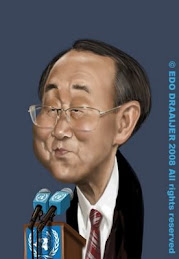

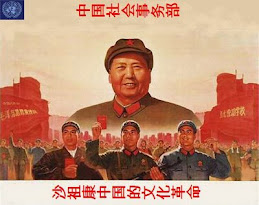










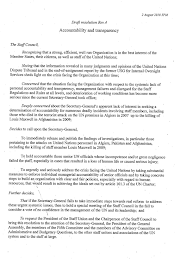

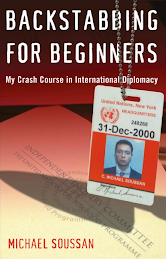
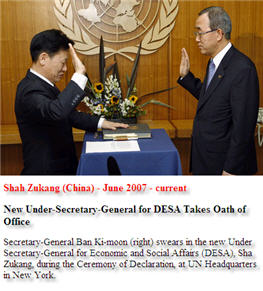
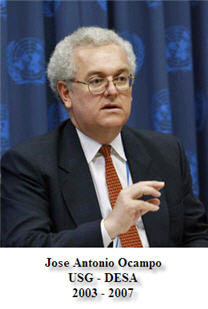
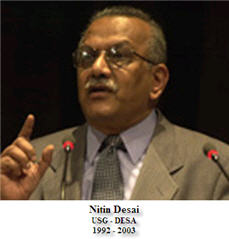
No comments:
Post a Comment